Ciudad de México: The Paradise of Craziness

Ciudad de México, the city of Aztec descendants, the city of poverty and dirt, the city of glitter and opulent decadence, the city of sirens and red rooftops, sinking deeper into the swamp under the torso of the ancient ruins of Tenochtitlan year after year. The city of gangsters, the city of artists and wild souls, the city of love without boundaries, the city where nothing is crazy enough to happen here.
"There is no way I’m going back to Mexico. I can’t stand to be in a country that is more surrealist than my paintings," famously declared the Catalan painter Salvador Dalí after he visited the land of tall Mayan pyramids and deep smuggling narco-tunnels. Surrealism, of which he was a representative, describes dreamlike imagery and bizarre scenes infused into everyday situations. Mexico is just like that. It surprises you every time with something seemingly unreal. And after living there for several years, I can say that its capital, Ciudad de México, is - as the locals would say - the "mother" of it all.
Mexicans even have a saying they use when they see particularly crazy scenes: 'Imagine living in Switzerland and missing this!' In a rich, clean, and orderly country below the Alps, you probably wouldn't expect to see pudgy policemen grabbing tacos from the bonnets of their cars with greasy hands while cars run red lights behind them. You probably wouldn't meet an old man on the subway there, with a fancy fighting cock crowing from a bag on his lap. You certainly wouldn't try food like ice cream in a bun there, and you couldn't engage in a mundane battle between musical subcultures or marching feminists with hammers and molotovs on a quiet afternoon.
Nothing is far-fetched enough that it can't become a reality in Ciudad de México.
Beer and shrimp and glory Sunday
"Touch your eggs, not my merch," reads a sign in the middle of a table on which boxers and switchblades are laid out, just below shelves of caps with drug cartel emblems. We're in the Tepito district, a dreaded corner of the city, synonymous with the local narco-trafficking scene. The local black market offers everything from USB drives with collections of downloaded music to homemade porn, fakes of all kinds, and drugs of all kinds, to a hole in the belly.
It's Sunday and the vendors are shouting as if the world is about to end. They're screaming over the music that's playing all around. In an improvised beer hall between the stalls, where toothless drunks mingle with amorous couples at a few tables with bar stools, a self-proclaimed singer has erected a scaffolding over the heads of the others. He has carried equipment on it and now floats on it like a stage, singing songs of love and death. The first noontime beers of the guests blend in with the ending fiestas of the night before.
Some people look like they are about to collapse under the table from overjoy and celebration, others take giant cups and go to see what the market has in store for them. But it's not beer they have in liter jars, it's michelada. A drink that brings you back to life in the heat of the moment or after a hangover. The base is a sour-spicy syrup poured over beer, drizzled with lime, and topped with tomato juice. The edges of the cup are dipped in a sticky salsa that dyes the mouths of consumers red. The first sip will make you grin, but it will bring you joy.
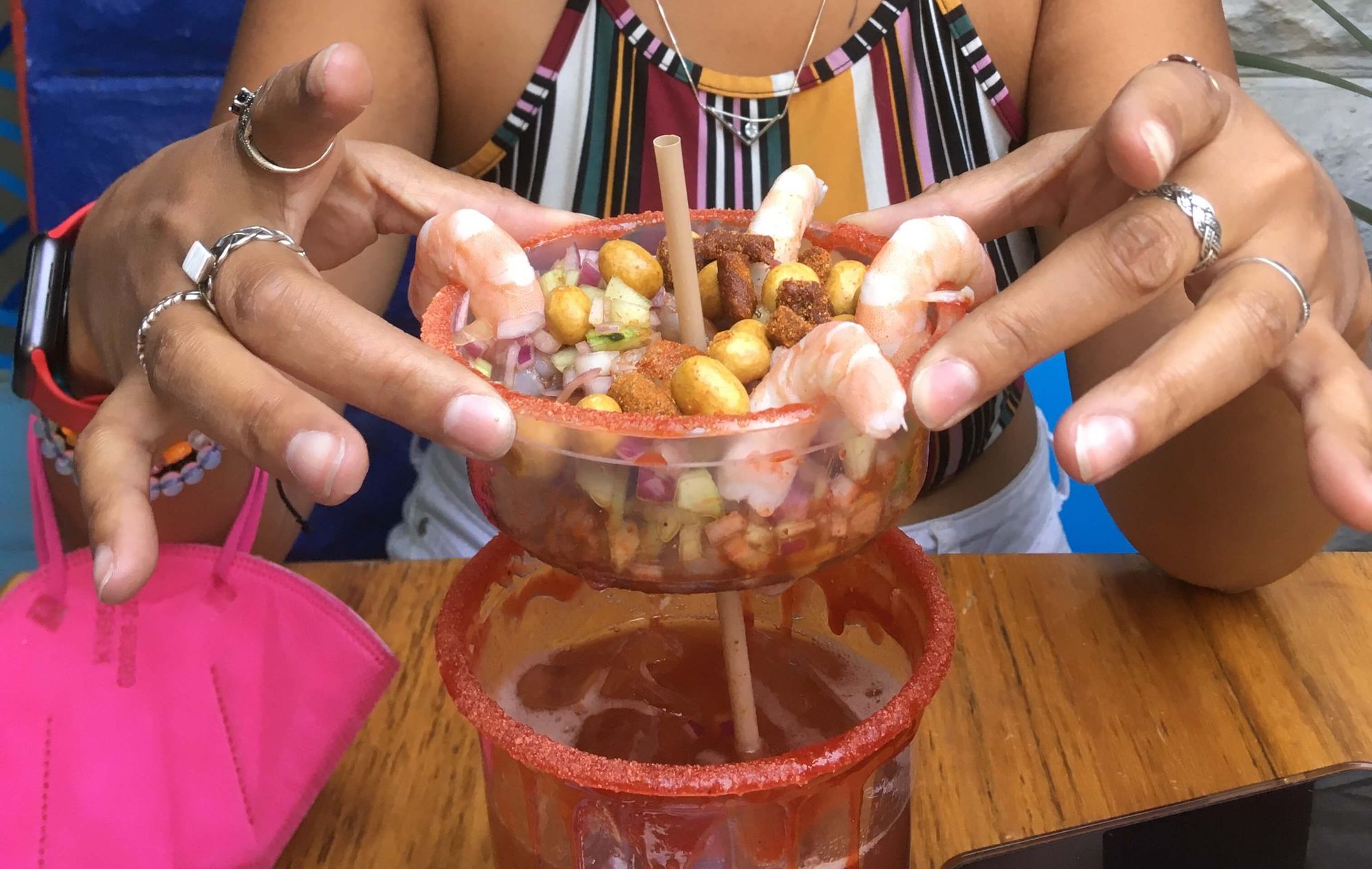
Remember, however, that you are in Mexico, where everything goes to escalate. It would be a shame to end up with just a beer and tomato juice when you can also have gummy worms, bears, or cooked shrimp swimming in it. And if that's not enough, you can get them served in a plastic replica of a penis. People walk around the market in Tepito with these too.
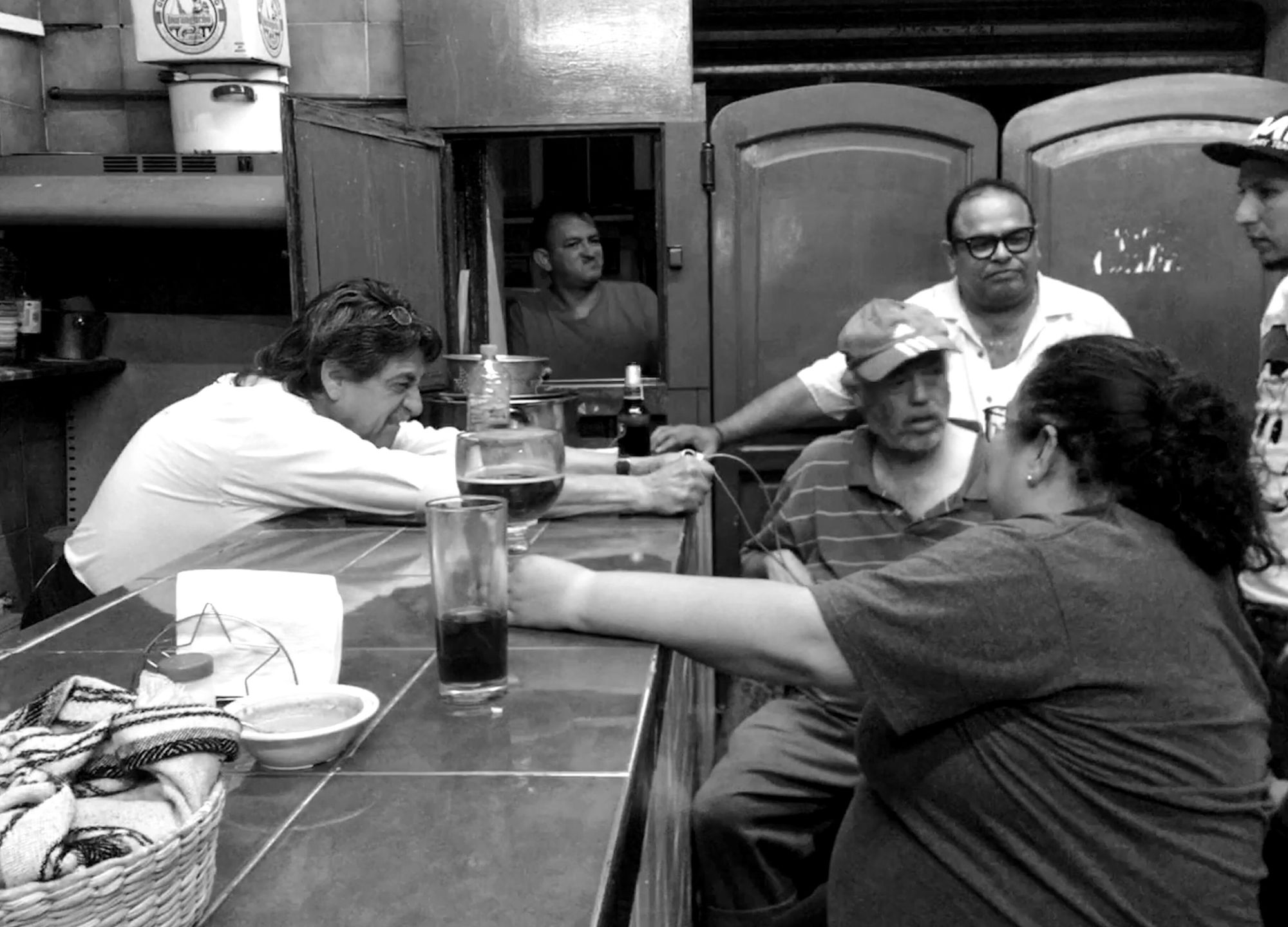
Through its tiny streets, young men whizz among the visitors, their carts loaded with mysterious boxes and parcels, which they disappear with into the guts of the adjacent safe-houses. Tattooed gangsters walk with a judicious stride, with stern looks, to the lustful gaze of street princesses, displaying their definitely not minimalist curves leaning against the walls. But there are also whole families with children who have come to buy Louis Vuitton handbags for a hundred and fifty pesos or Rolexes for two hundred (that definitely wouldn't happen in Switzerland!).
Cause for the weekend, the heart of Chilangos, as the residents of the Mexican capital proudly call themselves, pulls on the tianguis. That's what they call the markets, whether it's the permanent set-up outdoor stalls like here in Tepito or the occasional blocking of parts of the streets with tables of trinkets and homemade cheese that locals like to walk among. They go back and forth, meet friends and buy things they had no idea existed before. You'll find beer bottles from the Mexican Revolution, as well as paintings by local masters, an eagle's claw, and a python belt. Who could pass up a stroll through the selection of jewelry modified for snorting cocaine or past collections of hundreds of Lego figurines or collector's cards?
Visitors eat elotes, or boiled corn cobs smeared with mayonnaise and speared on a skewer, a thousand types of tortillas or roasted grasshoppers. They are cheerful because work doesn't start until tomorrow, and who cares about tomorrow?
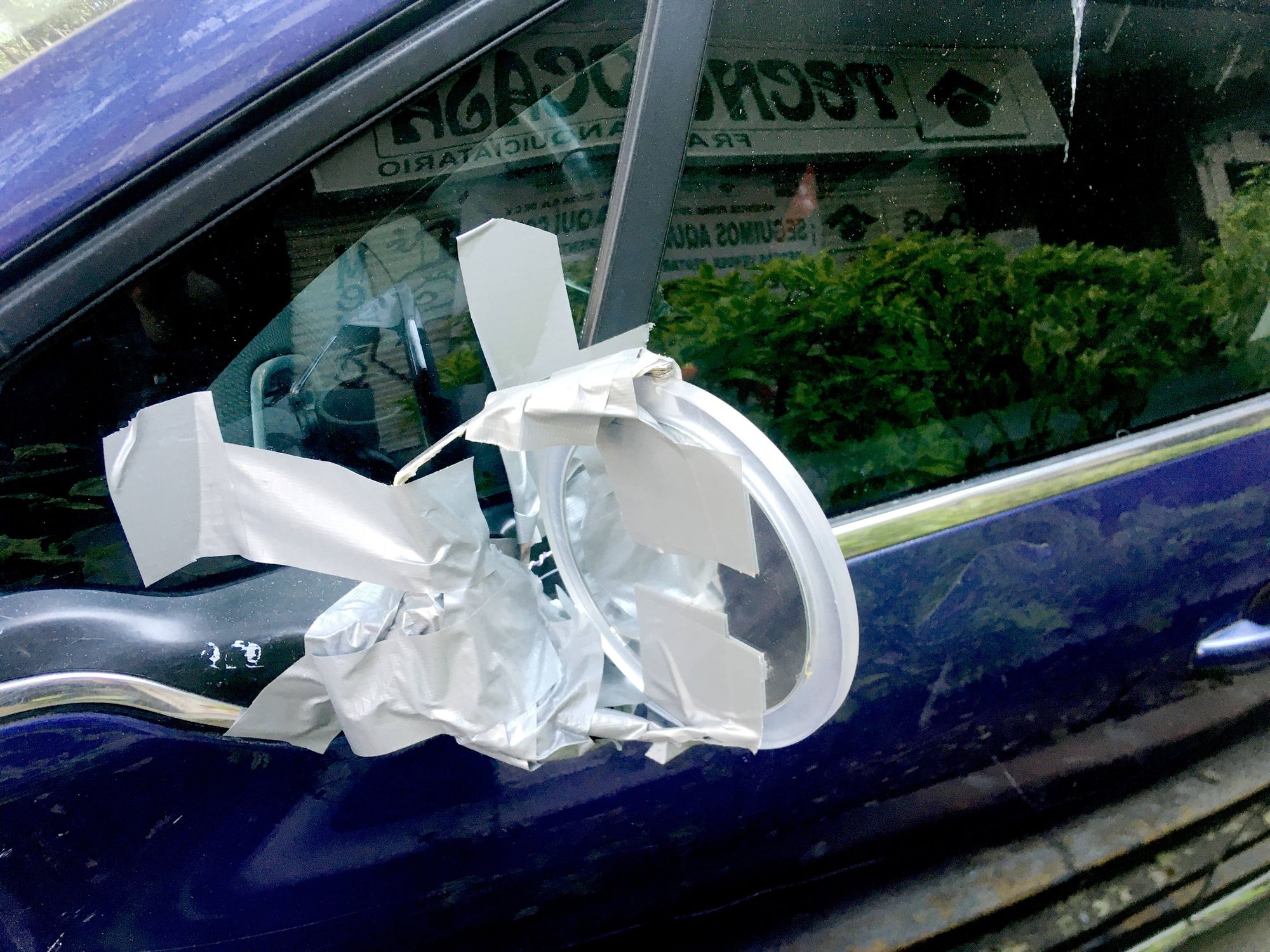
Sunday in Mexico City
Sunday is a day reserved for family activities and gathering with friends. There is a need to fix the hangover from a night of dancing. And there's no better cure than tacos de barbacoa. This is slow-roasted lamb, ideally in traditional underground ovens, served sliced into small pieces in corn tortillas and accompanied by a strong broth. No other dish here symbolizes the end of the week quite like this one, and families have been forming in the street by the stalls selling this delicacy since morning.
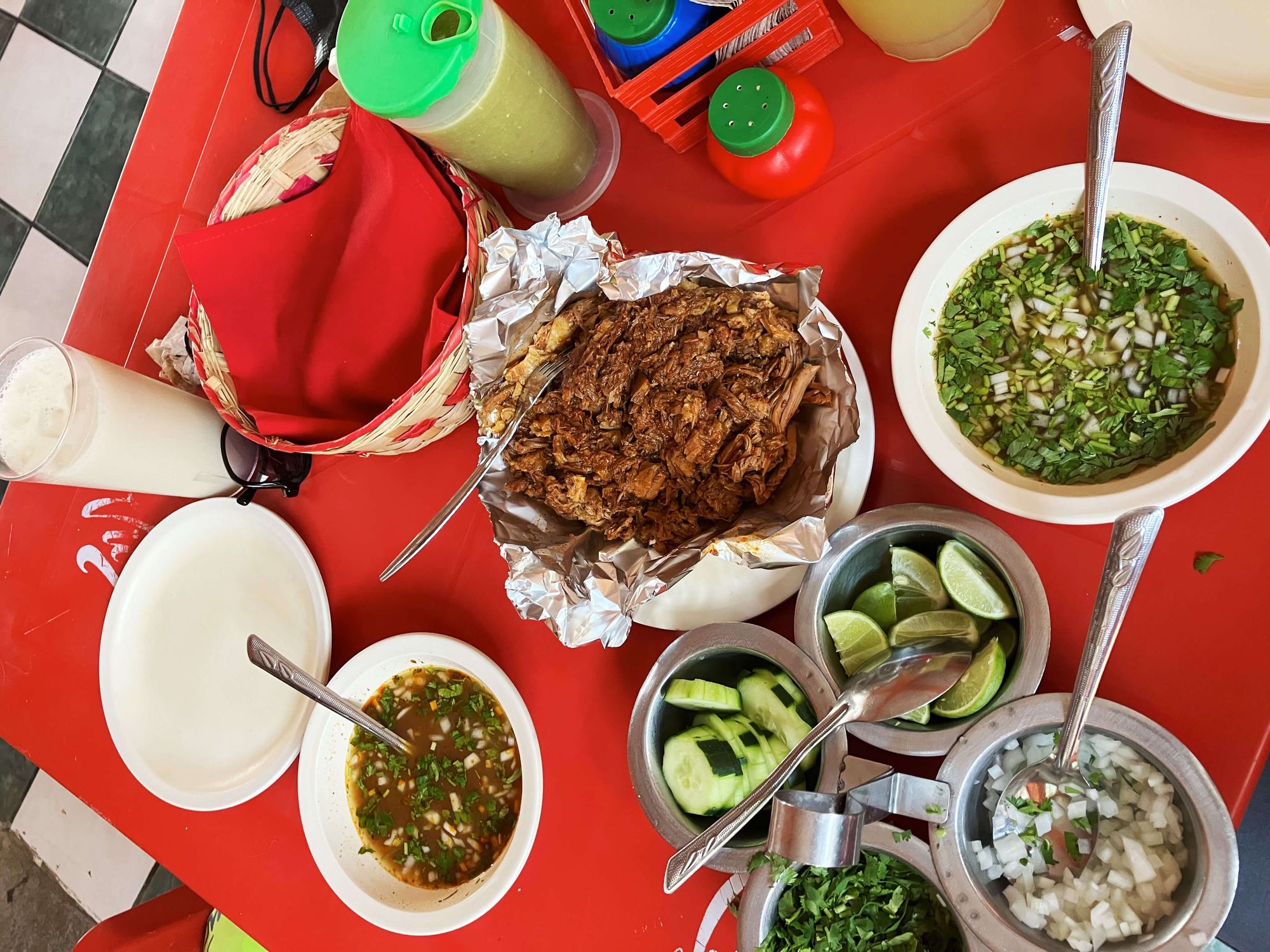
Some then head out to cool off and take a break from the concrete in the sprawling Chapultepec Park, where a day can be spent around the once-presidential castle and adjacent gardens and ponds. Others head to the southern edge of the metropolis to the lagoons of Xochimilco. Gondolas sail there like in Venice, only here they're not so much loaded with couples in love as with groups of alcohol- and other-substance-enhanced friends who have anchored a cooler overflowing with beer and tequila bottles in the middle of the boat and are now dancing beside it on their way past the Island of the Dolls, a horror-ish view at one of the cottages, which its owner has gradually decorated entirely with shabby children's dolls.
The younger and more modern ones spend their free time hanging out in the parks of España or México in the Condesa and Roma neighborhoods, which are known for their multi-nationality and have in recent years been suffering from the influx of wealthy ex-pats from the US, Canada, and Western Europe. Many of them sip their caffé lattes with bare feet and write soulful poems in tattered notebooks while their colleagues play ukuleles or some experimental synth stuff. These districts have little in common with the rest of Ciudad de México, but without them, the city would lose a valuable center of the artistic and pseudo-artistic scene, which in turn takes over the local nightclubs, more or less alternative. It would also lose 98 percent of its vegan and vegetarian eateries, that - dare I say it - will not break the heart of the average Mexican, who is usually a sworn carnivore.
The sirens and chilaquiles
A typical morning in Ciudad de México smells of lavender, because if anything beats the ubiquitous smell of corn tortillas here, it's the scent of Fabuloso lavender floor cleaner, which cannot be missing in any household, and which every proper housekeeper always uses to scrub the flooring at the start of the day, as well as the pavement outside the house. This gives the city a spring freshness every morning, even when it's cloudy and autumn-ish.
By now, the sounds of bells, whistles, and loud voices are already echoing through the empty streets, as vendors summon the inhabitants to their stalls with sweet bread, and even sweeter instant coffee, like modern-day Mexican ratcatchers. Or the local breakfast delicacy of chilaquiles, which are tortillas ripped into pieces, soaked in green (always go for green!) or red (if you know anyone who preferres red over green, let me know) salsa, topped with chicken or chorizo chunks, onions, and cheese.
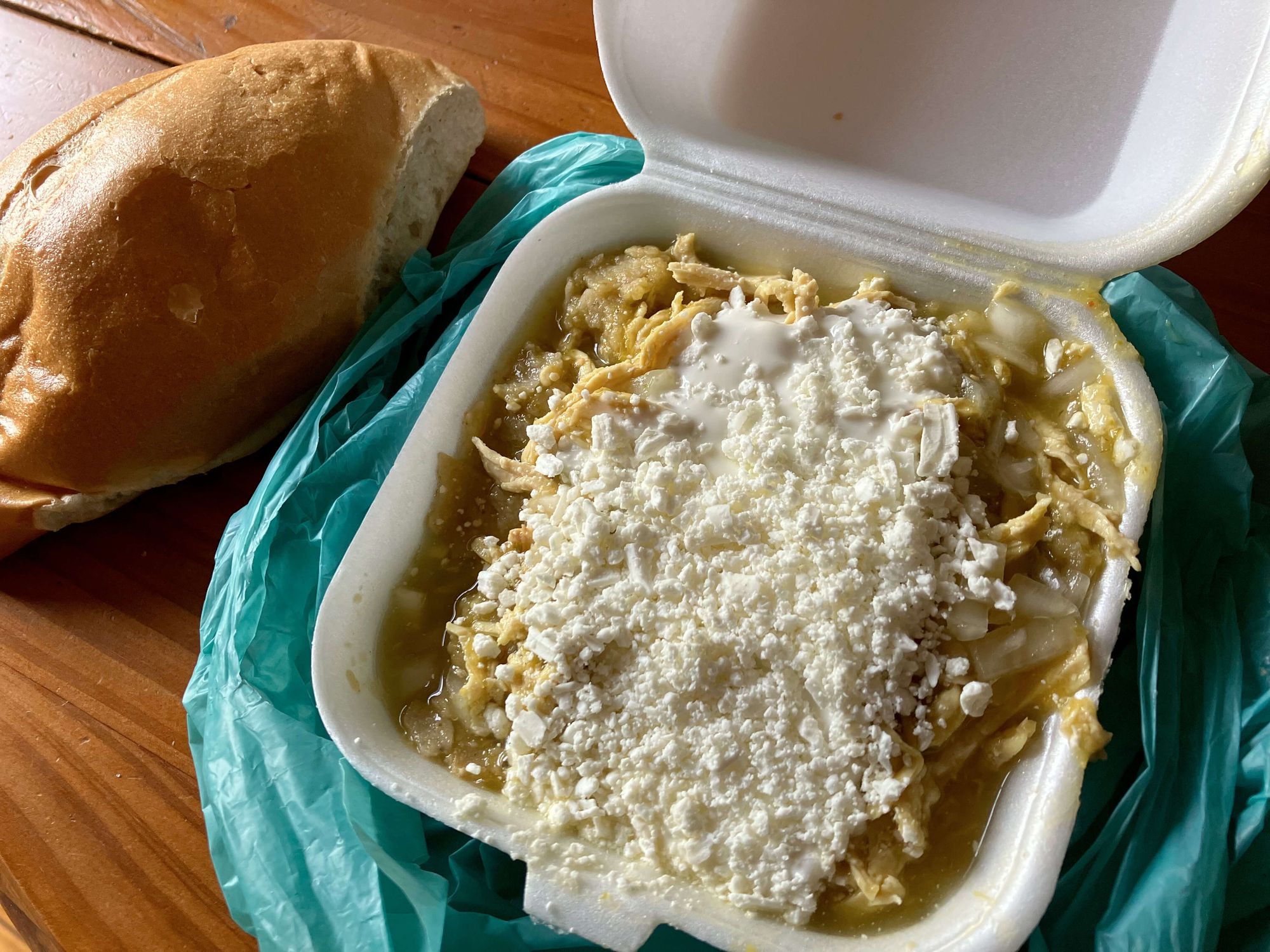
Food, after all, is not just a simple intake of nutrients in Ciudad de México, but a separate and important chapter of life there. The sweet-stale smell of toasted tortillas hits your nose as soon as you disembark at Benito Juárez Airport. The smell is ubiquitous, as are the ubiquitous stands selling tacos, sopes, huaraches, pambazos, tamales, tortas and, of course, quesadillas, the folded tortillas that - as the name suggests (queso = cheese) - are supposed to have something to do with cheese, but only here in Ciudad de México are quesadillas served without cheese for some reason. You have to ask for it, which also reveals to everyone around you that you're not a true Chilango. A true Chilango enjoys all this from breakfast to late dinner, exclusively around the tin stalls on the street, sitting on doubled plastic stools.
Just as every city has its smell, it also has its sound. And Ciudad de México, the 25-million wonder beneath the Popocatépetl volcano, is a musical entity itself. It's a gorgeous orchestra that you start to hate with your first morning wake-up call to the sound of car horns, and police sirens that serve no purpose to law enforcement other than greeting taco vendors on the corner. Gas and water vendors don't pass a single street in the entire city with their trucks, shouting a monotonous and drawn-out "Aaaaaaa" into windows. You will learn to recognize the range of products on offer only years later when your already trained ear can distinguish that 'Aaaaaaaa' means agua (water), while 'Aaaaaaaas' is gas.
But this town couldn't function without sounds, because how else would you know the garbage men have arrived and it's time to run to their truck with the garbage if they weren't already ringing like crazed big cowbells from the turn until they wake up even the most capable sleepers? And that goes for another of the sounds the locals like to hear least of all, the seismic alarm. It warns people of an earthquake, which you can easily guess by the fact that it sounds like the soundtrack of a disaster movie. Whenever it goes off, people have only a few seconds to run out of their beds or offices and gather outside their houses. Whether they're in their pajamas, naked, with curlers in their hair, or in the company of a lover or mistress. When the alarm sounds, all CDMX residents are equal. At that moment, all the surrounding noises are silenced. But when it turns out to be a false alarm - which is not infrequent - it only takes a few seconds for the Mexicans, with their black humor caricaturing themselves most often, to start cracking jokes about how many bolillos need to be consumed to calm down from the shock, and the car horns, the music of street musicians and the screams of drunks are all back.
#sismo #CDMX #Terremoto pic.twitter.com/RC3aCpzKCf
— Václav Lang (@vaclavlang) April 4, 2023
But everyone knows what the unwritten anthem of this city is. It's a song you can't escape from your first moments in Ciudad de México - no matter which part of the city you're in. It comes from the vans that crisscross the metropolis from the center to the periphery, and which, for a fee, rid residents of large appliances and other excessive waste. "Se coompraaa, colchoones, tamboooores, refrigeradoooores," sings a girl's voice from the mufflers on the vans, and you know you're in Ciudad de México even if you've been kidnapped the night before (it happens, too) and carted from place to place with a black hood over your head. You'll have that sound in your ears for the rest of your life, it's like a local form of tinnitus (chronic ringing in the ears). Tinnitus Chilango, this tune might be called, and it's only a matter of time before UNESCO lists it as a cultural heritage next to the mariachis, the refined musicians in traditional outfits who still sing serenades now and then under windows, next to busy highways or shopping malls.
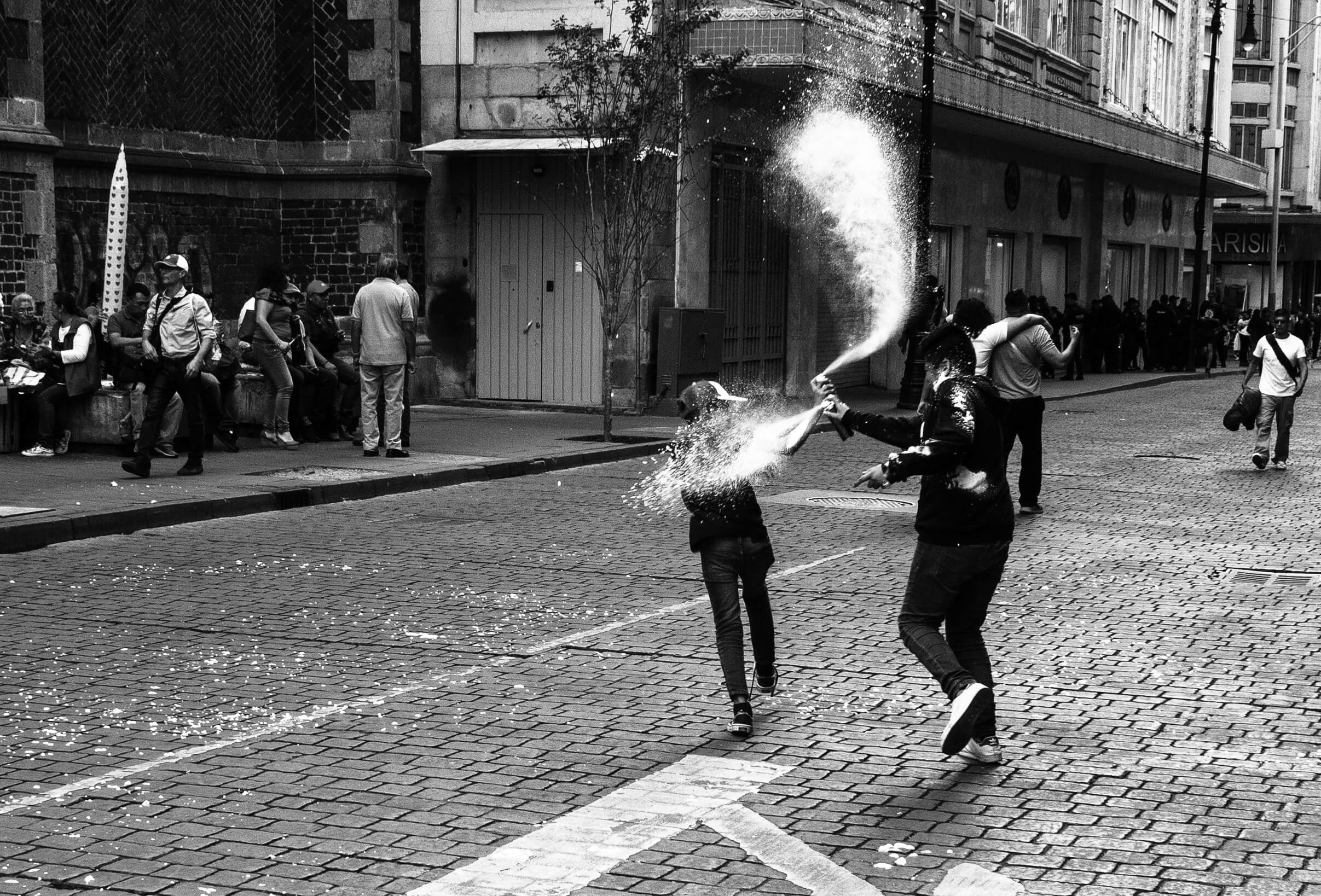
After all, the streets are full of musicians here: they walk from lunch to late dinner around restaurants and the corners of houses, hoping for the generosity of passers-by or those who throw change right out of their windows. Their talent usually has no effect on the amount of money they earn.
The locals are used to sharing the little they have, so no wandering artist ever comes up short. This is also true of those who regularly drop the same dreadful tune right under your window at the same time and day, which they have been playing falsely for twenty years, but still get a few pesos for it.
In the concert hall called CDMX, you will hear a variety of instruments, which at first glance are not related, even disturb each other, but together they form one wild band. And whether the audience likes the concert or not, it doesn't matter to the smiling conductor.

Of Passion and Death in Mexico
Art as such plays an important role here. It's not at all about the performer making a living from it or having millions of fans, as we in first-world countries think of it. It's about the creative impulse that perhaps everyone here has within them, and which is written into everyday life at every turn. No wall escapes graffiti or street art posters, and every lamppost or traffic light is dotted with homemade stickers. Photographers and film crews can be seen everywhere, amateur exhibitions are held in cafes in the modern neighborhoods, dance lessons in parks, and regular early evening rap battles in the big squares. The passion for creating and expressing the inner voice is simply part of the DNA here. And it doesn't have to be just art as we know it. For example, outside my favorite cantina, which is an ancient dingy hangout in the crudest sense of the word, every day a female mannequin is pulled outside the pub, and the bartender with a menacing scar across his eye caringly dresses in a new outfit each time. To me, this is sort of an art.
After all, art is often used here for political activism too. It has a similarly strong tradition here. Just because it is not news to people here that politicians take them lightly doesn't mean they put their heads down and let it happen. Not a day goes by that there isn't a demonstration at the Revolution Memorial or Angel de la Independencia square, whether it's by the unions, mothers searching for clandestine graves with their murdered children, or naked people calling for I don't know what. Whichever group it is, it is ready to fight for its ideals. A case in point is International Women's Day on 8 March, when thousands of people take to the streets every year, and the most radical, represented by the hard feminist core, storm (literally) the state forces into the night, lighting fires near government buildings and marking with hammers everything in their path. In a country where the common person has no tools against the nepotism of power, they often have no choice but to ask for their rights in the most extreme way.
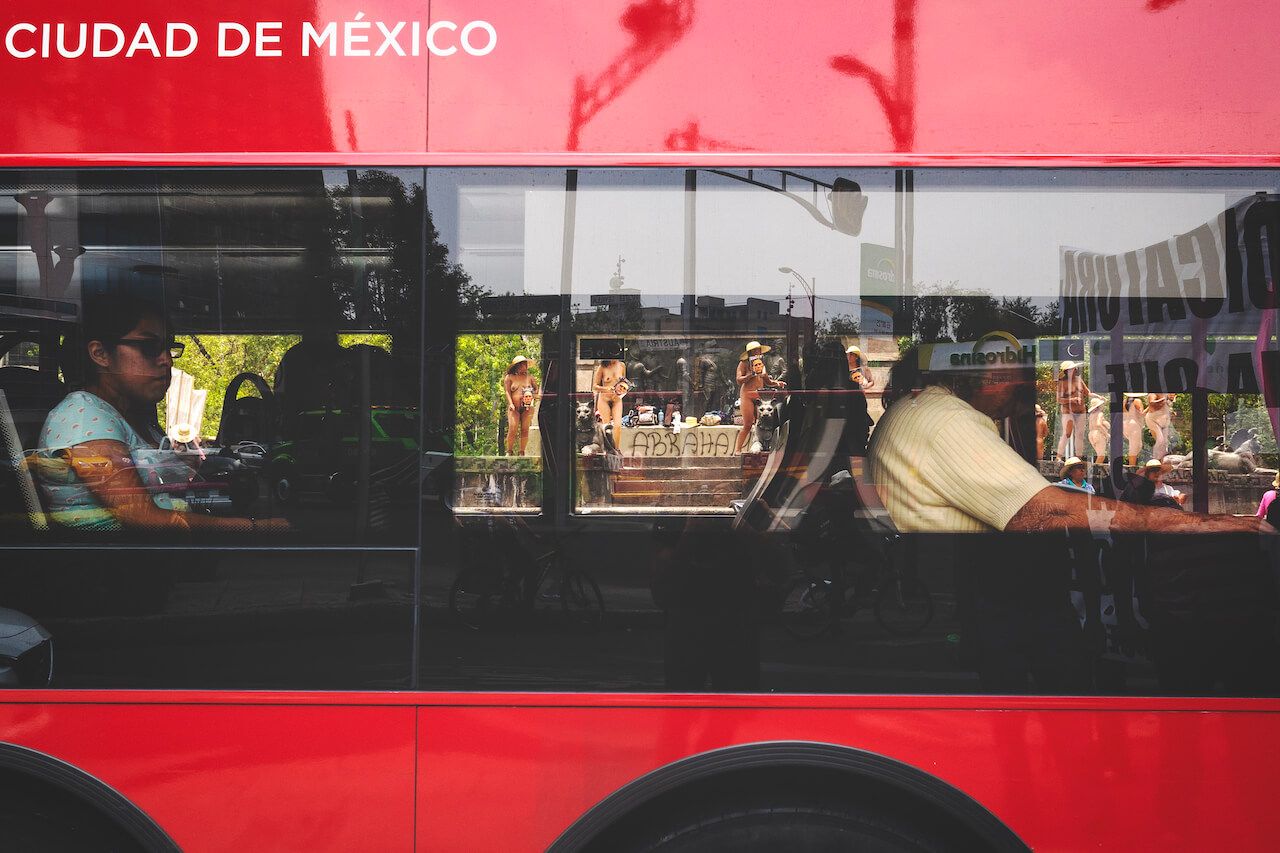
CDMX: The Paradise of Craziness
You may be wondering if it's dangerous there. Yes, kind of (...and kind of less for foreigners). Living in Mexico City means living on the edge. After all, where else do you get robbed of everything you have on your person by the same guy on the street, who also immediately warns you to beware of thieving gangs in these places? Ciudad de México is suffering a lot of pain and tragedy. Perhaps that's why it's so unbridled, living like there's no tomorrow.
There is much that is remarkable and beautiful in all of Mexico. The Mayan pyramids, the Caribbean sands, or the diverse flora and fauna will come to mind. But above all, it is the local people and their immediacy, their courage, perhaps born of the warm concept of death here in the land of the warlords Pancho Villa and Emiliano Zapata. Death lurks around every corner here, so why bother with work or money when the world could end tomorrow?
The important thing is freedom and to be able to get the most from the one's life. And the rest? Me vale verga, the common resident of the Distrito Federal, as the Ciudad de México used to be called, would say, meaning something like: I don't give a fuck. There's nothing a Chilango can't handle. Often in the strangest and least expected way. And so sometimes the streets are more like a museum of curiosities.
You will see laughing volunteers pushing a police car with law enforcement officers inside along a five-lane road. You'll see a man heading to the local taqueria for dinner wearing a lucha libre wrestler's mask. You'll also see plenty of real Lucha Libre fights, where a grandma in the front row beats an overgrown muscular wrestler with a stick, or many drag shows where men in wigs and fake boobs dazzle the audience. You'll see guys pulling a new luxury couch up to the top floor of apartment complexes on ropes, bouncing and bouncing off balconies on the lower floors, where nervous neighbors watch in mute amazement. You'll see hundreds of bulldog owners meeting their pets in wheelbarrows, but you'll also see hordes of motorcyclists rolling through the city at midnight, helmetless and on their back wheels only. You'll see a reenactment of the crucifixion of Jesus Christ in a neighborhood with a record of one murder a day, you'll see pensioners dancing in parks, people selling witchcraft items in local markets, you'll see bizarre food combinations from sandwiches in sandwiches to fried scorpions. You'll see a lot of strange things and a lot of strange people.
Such is life in Mexico City. You never get bored, you never stop wondering. Nothing is crazy and surreal enough. You're always surprised at how far the boundaries of the possible can be pushed, to what levels the craziness can be taken.
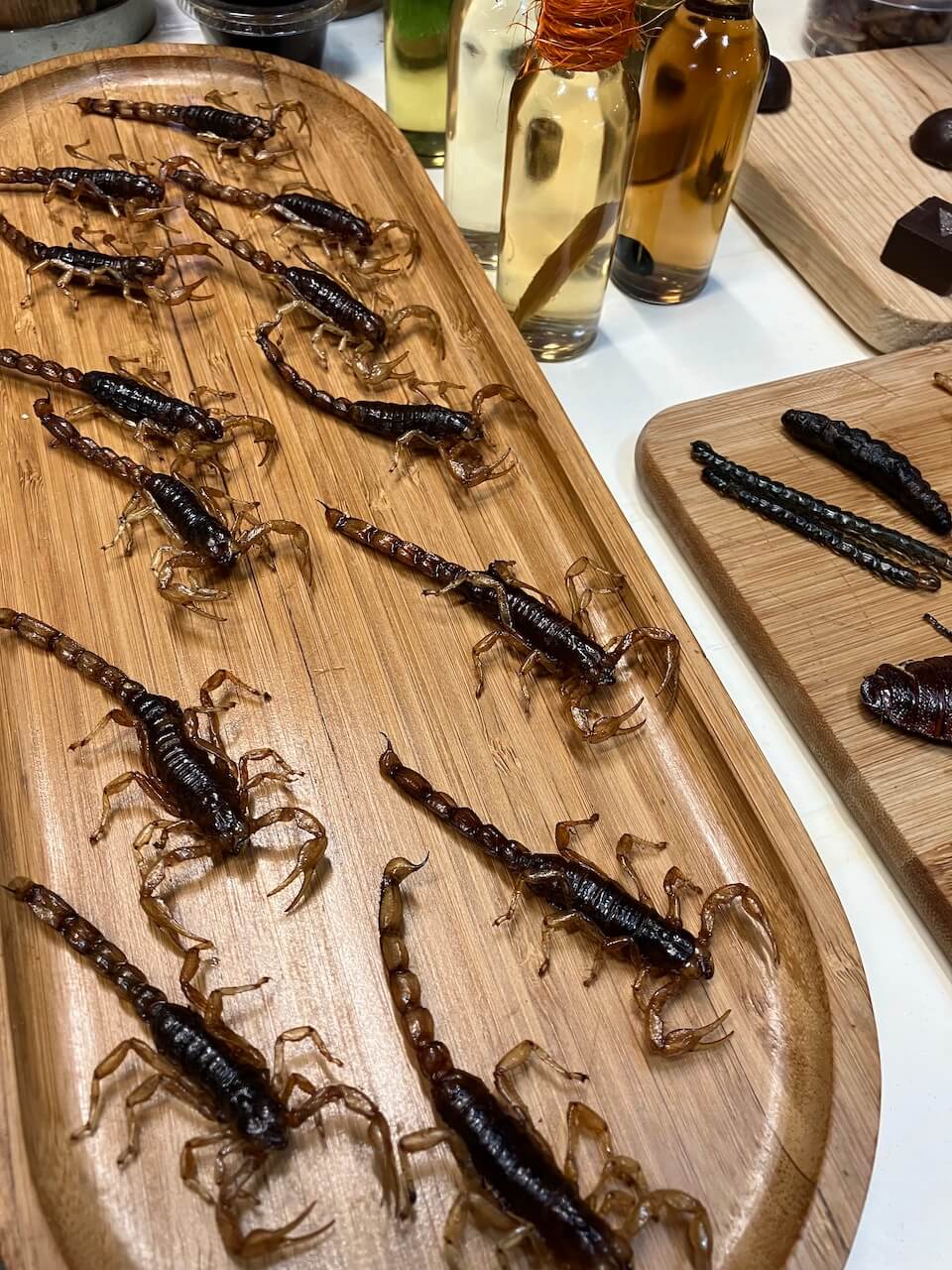
No one could seize this big city even in three lifetimes. It's so vast and so disparate and so full of sensations that it's impossible to take it all in, but when you soak up its outwardly grey but under the surface vibrant and colorful atmosphere of quiet restlessness and endless possibilities, it infuses under your skin as soon as you see its darkened streets and shabby buildings, as soon as you walk into the first dingy bar and order a mezcal and micheladas and start tapping to the rhythm of cumbia. Every time I leave it, I feel like I have to leave the party at its best.
Are you looking to go to Mexico but don't know where to start? Download my itinerary for a three-week trip with the most important things to see in Mexico. Now is the best time to go.
Do you agree with me? Or disagree? What is your experience with Ciudad de México? Let me know.

